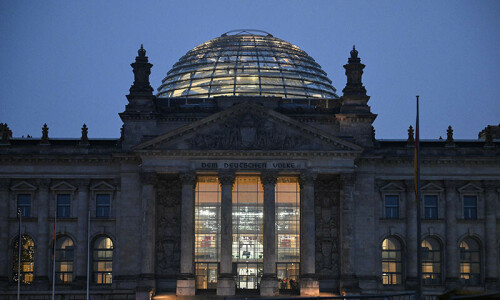Chances are that Pakistan will achieve a primary surplus, build up enough foreign exchange reserves and bring down the current account deficit to a safer level by the conclusion of the 39-month $6 billion Extended Fund Facility (EFF) from the IMF.
The long-term sustainable economic recovery, however, will continue to hinge on the country’s ability to boost its exports and attract domestic and foreign direct investment in the manufacturing sector. Otherwise, we may once again be knocking at the doors of the Washington-based lender of last resort shortly after the conclusion of the programme.
Both the previous and present governments have made efforts to increase exports during the last two and a half years. These include the implementation of the zero-rated regime for export-oriented industries, cash subsidies to exporters under the Prime Minister Exports Enhancement Package, improvement in energy supplies, partial payment of tax and other refunds, exemption of import duties on raw materials used in export production and substantial reduction in the prices of electricity and imported gas.
These actions have helped slightly increase goods exports in the last two years with value-added textiles leading the modest recovery. Although the results of such measures are expected to appear in the next six to 12 months, it will be silly to expect a major turnaround in the next couple of years given low productivity, small share of value-added products and decrease in global demand.
Falling investment in manufacturing in the last one decade is at the heart of the country’s present economic woes
Some major textile groups encouraged by the reduction in energy prices plan to invest $2 billion in the next two years in the value-added industry. They aim to take full advantage of the favourable policies to upgrade technology, expand capacity and diversify product range. This kind of investment is estimated by the industry to create at least 100,000 new jobs.
However, the prospective IMF programme appears to have dampened the investors’ enthusiasm and many have put their investment projects on hold. They fear the government may reverse their zero-rated status to bring them into the proposed value-added tax regime and withdraw energy subsidies and other export incentives under the yet-to-be-announced EFF agreement.
Many fear that the IMF is going to insist on using the exchange rate mechanism alone to incentivise exporters as the government makes massive fiscal adjustments over the next three years to cut its spending and fix its current account woes.
Decreasing investment in manufacturing in the last one decade is at the heart of the country’s present economic woes. The share of manufacturing in the country’s GDP dropped to 12.1pc in 2018 from its peak of 14.8pc in 2008, indicating the decline in industrialisation and a loss of jobs. There are numerous factors that have led us to premature de-industrialisation. The cost structure of the industry remains one of the major causes that have eroded international competitiveness, discouraged investment in manufacturing, exported jobs and decreased exports.
Pakistan’s exports are 8.5pc of its GDP compared with 88.6pc for Vietnam, 21.9pc for Sri Lanka, 14.4pc for Bangladesh and 11.9pc for India, according to the Pakistan Business Council.
India has increased its exports from $59bn in 2003 to $296bn in 2017, Vietnam from $20bn to $214bn and Bangladesh from $6bn to $41bn. This compares with a paltry increase of $10bn to $22bn in the same period in the case of Pakistan.
Exporters argue that the withdrawal of zero-rating, energy subsidies and other incentives will squeeze the fiscal space to make new investments for the planned expansion of manufacturing for import substitution and export enhancement.
India has recently announced new rebates of up to 10pc to help its textile industry improve global competitiveness and take advantage of the US-China trade war.
Textile mill owners, who contribute 58pc to the country’s total exports, insist that their exports of $13bn or so represent 70pc of total textile and clothing products produced in the country. The remainder is sold in the local market. So instead of abolishing the zero-rated regime for exporters and hoarding their liquidity (estimated at Rs600bn annually) with the Federal Board of Revenue (FBR), the government needs to improve its tax collection on local sales at the retail level. Last year, the FBR collected Rs10bn instead of Rs27bn on local sales of textile products.
Indeed, the fiscal adjustments are necessary to put the economy back on the rails of stability. But the government will be well advised to not ignore the fact that long-term recovery is simply impossible without encouraging manufacturing that should be contributing at least 30pc to GDP.
Only a vibrant manufacturing industry can help address internal and external imbalances, boost exports, create jobs, alleviate poverty and generate a current account surplus on a sustainable basis. The government will do itself a favour by continuing the present incentives for exporters of manufactured goods, especially the value-added products, for at least five years to encourage fresh investment.
Published in Dawn, The Business and Finance Weekly, May 27th, 2019













































